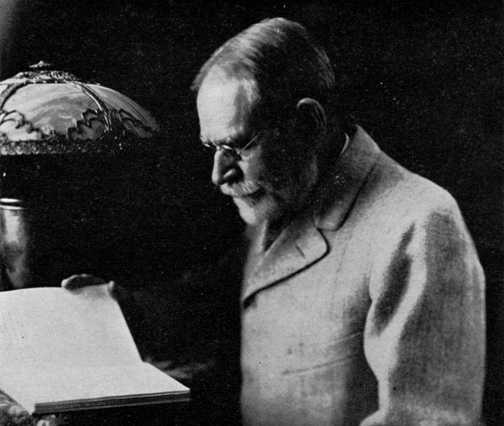A Sonorous Symphony of Innovation
The close of the nineteenth century bore witness to an era of unprecedented discovery and invention, where science and the creative spirit were harmoniously intertwined. Among the many great inventors of this time, the name Charles Sumner Tainter often echoes with an air of understated elegance, like the soft notes of a forgotten melody. A scientific instrument maker, engineer, and inventor, Tainter’s contributions to the field of sound recording and reproduction laid the groundwork for the phonograph—a device that would revolutionize the way humanity experienced sound.
Born on April 25, 1854, in Watertown, Massachusetts, Charles Sumner Tainter was the son of George Tainter, an inventor in his own right, and Abigail Sanger Tainter, a woman of high moral character. Unlike the formal schooling of his contemporaries, Tainter’s education was unorthodox, his intellect fueled by an insatiable curiosity and a desire to explore the world around him. Tainter’s affinity for scientific literature and his avid readership of Scientific American nurtured an innate talent for mechanical innovation.
Tainter’s early career saw him employed by several firms specializing in electrical instruments, before joining Alvan Clark and Sons, a renowned manufacturer of telescopes and optical instruments. Here, his talents were recognized, and he was appointed as a member of the U.S. Government Expedition to observe the transit of Venus in 1874—a celestial event of great significance.
Yet, it was in the realm of sound that Tainter’s genius would find its true calling. In 1878, Tainter started his own business in Cambridgeport, Massachusetts, constructing scientific instruments. It was here that he would meet Alexander Graham Bell, whose invention of the telephone had placed him at the forefront of scientific discovery. By 1879, Tainter accepted Bell’s proposal to collaborate in a small laboratory in Washington, D.C.
It was in this intimate setting that the Volta Laboratory Association was established in 1881—a partnership between Alexander Graham Bell, his cousin Chichester Bell, and Charles Sumner Tainter. Their collective efforts culminated in the development of the radiophone, an instrument capable of transmitting sound via light using sensitive selenium cells. Tainter’s contributions to the radiophone were recognized at an electrical exhibition in Paris in 1881, where he was awarded a gold medal and diploma.
But it was the phonograph—Thomas Edison’s talking machine—that captured the imagination of the Volta Laboratory Association. Edison’s invention, though novel, was limited by the fragility of tinfoil as a recording medium. Tainter, Bell, and Chichester Bell labored tirelessly to overcome this obstacle. The result was the Graphophone—a remarkable device that used a wax compound to engrave sound waves directly, making it possible to manufacture the device commercially. The Graphophone, patented in May 1886, marked a turning point in the development of sound recording.
As though in a symphony, each note of Tainter’s life was meticulously composed, each melody imbued with the resonant echoes of progress. Tainter’s experiments with the Graphophone were meticulously recorded in thirteen notebooks, known as “Home Notes,” along with two large volumes of technical drawings and notes. His mind was an ever-flowing fount of invention, as evidenced by his exact drawings for a multiple record duplicator, as well as his rough sketches of experiments with various apparatuses.
Tragically, volumes 9, 10, and 13 of Tainter’s “Home Notes” perished in a fire at his laboratory in Washington, D.C., in September 1897. Yet, even amid the ashes of misfortune, the spirit of innovation endured. The surviving volumes, safeguarded by his attorney during a legal dispute, offer invaluable insight into the creative process of this visionary inventor.
While Edison is often heralded as the father of the phonograph, it is impossible to ignore the seminal role played by Charles Sumner Tainter. He was not only an inventor but a pioneer, a man whose tireless pursuit of knowledge and understanding propelled sound recording into the modern era. In the words of Tainter himself, he wrote an unpublished, undated manuscript titled “The Talking Machine and Some Little Known Facts in Connection with Its Early Development,” encapsulating his thoughts and reflections on the early evolution of the phonograph.
Though the partnership between Bell, Chichester Bell, and Tainter was dissolved in 1885, Tainter’s dedication to the advancement of sound recording continued unabated. He became associated with the International Graphophone Company, and later established his own laboratory in Washington, D.C. His contributions were internationally acclaimed, as evidenced by the Decoration of “Officier de L’Instruction Publique” awarded to him by the French government in 1889.
As the world stepped into the twentieth century, Charles Sumner Tainter’s legacy lived on, a harmonious chord in the grand symphony of American ingenuity. The Graphophone and its descendants, including the first Dictaphone, became indispensable tools in business, journalism, and entertainment. Tainter’s work provided a voice to the voiceless, a means of preserving the spoken word for posterity.
On April 20, 1940, Charles Sumner Tainter passed away, leaving behind a world forever enriched by his creativity and vision. Yet, his voice endures, immortalized in the countless recordings and devices that bear the mark of his genius. The Graphophone, and all that it inspired, remains a testament to the power of human innovation and the timeless beauty of sound.
In the quietude of a museum, one might come across Tainter’s personal papers, photographs, and notebooks—carefully preserved at the Archives Center of the National Museum of American History. In these documents, we find more than just the reflections of an inventor; we find the soul of an artist, a man whose life was a sonorous symphony of innovation.
Through the enduring legacy of Charles Sumner Tainter, we are reminded of the enduring power of sound—the power to connect, to inspire, and to transcend the bounds of time and space. In this, we find a harmony that unites us all, a melody that resonates across the ages—a symphony of discovery that plays on, evermore.
References:










